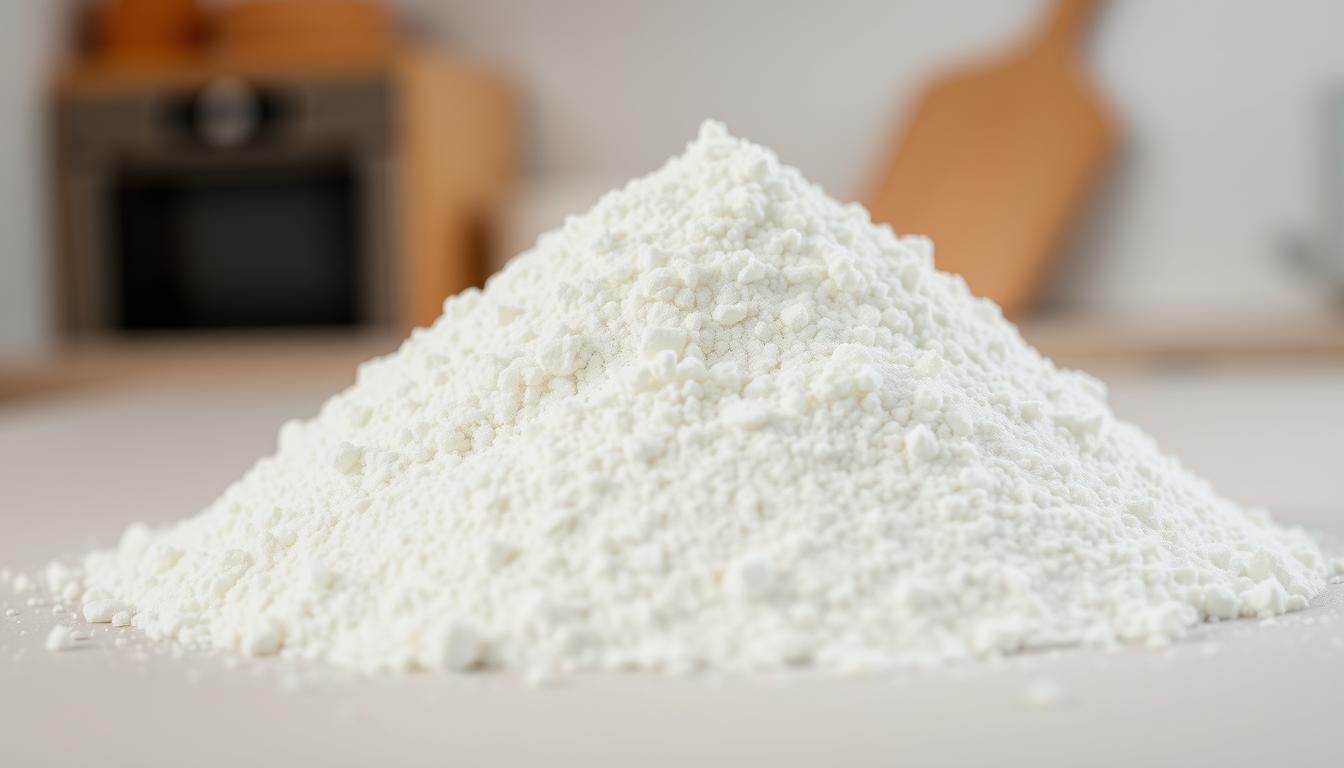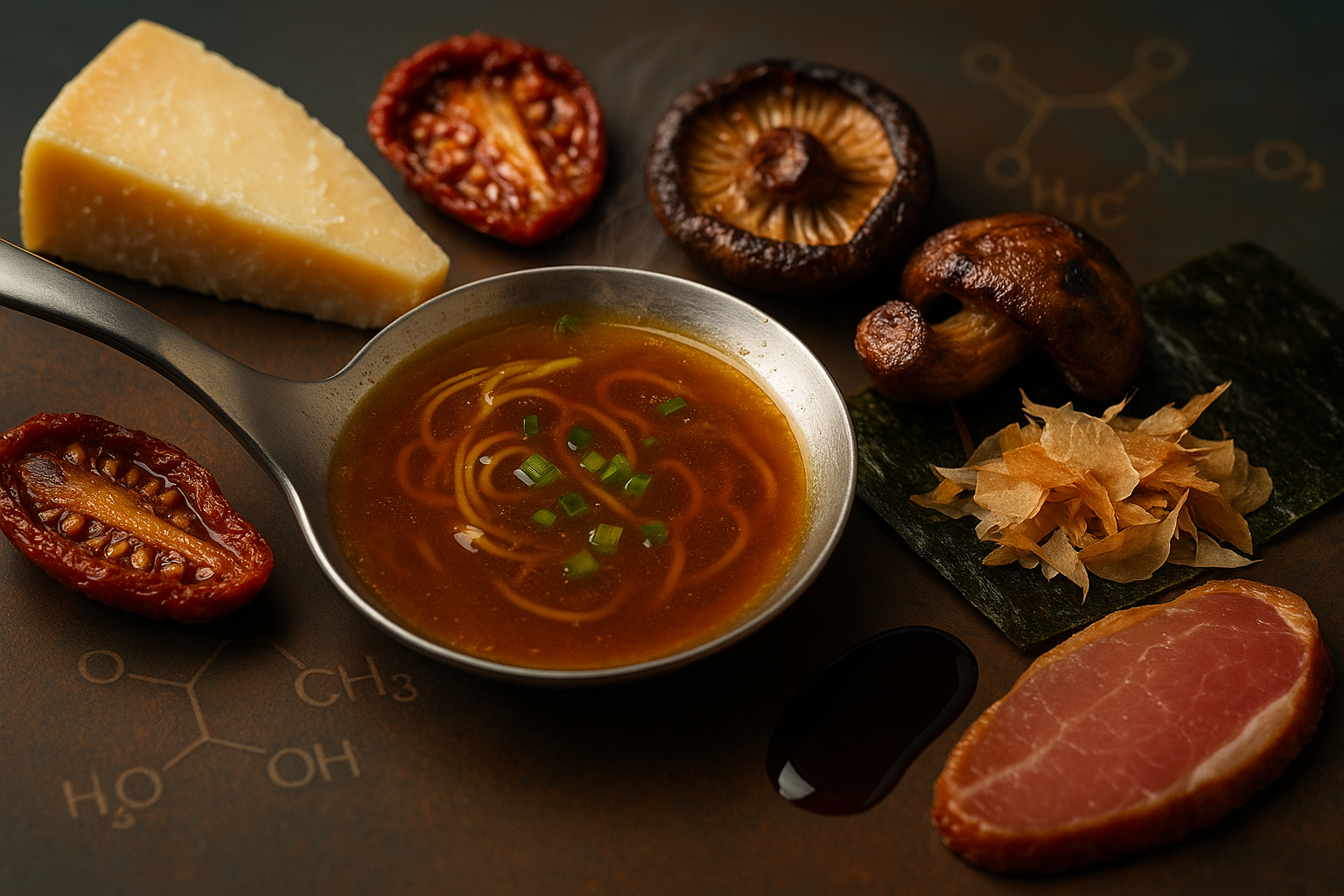
Restaurant Secrets to Make Your Soups and Stews Amazing
SUBSCRIBE TO OUR BLOG
Promotions, new products, and recipes.
Updated: September 28, 2025
Restaurant Secrets to Make Your Soups and Stews Amazing
Short answer: Great restaurant soup isn’t magic—it’s method + texture control. Chefs build flavor in layers (aromatics → fond → deglaze → stock) and they manage body and mouthfeel with smart techniques and, when needed, pro tools and chef-grade ingredients. At home, you can mirror these moves: use gelatin-rich or well-structured stock, finish with acid and fresh herbs, and employ modern pantry helpers like carrageenan (silky dairy soups), xanthan gum (fine-tuned body), guar gum and locust bean gum (creamy viscosity), lecithin (stable foams), and citric acid (bright, balanced finish).
Why it works: Stock made from bones chills gelatinous (body); broth stays fluid. That gelatin (or strategic stabilizers) gives soups the restaurant-style, lingering mouthfeel you notice but can’t always name (sources: Serious Eats; Serious Eats—gelatin hack).
What You Will Learn
- How to get restaurant-style body with stock, gelatin, or modern stabilizers.
- When to choose carrageenan vs. xanthan vs. guar vs. LBG—and why.
- How to layer flavor so soup tastes deeper without more salt.
- Blender-and-sieve method for ultra-silky purees (no graininess).
- Finishers (acid, herbs, oils) that make soup pop at the table.
- Cooling & storage times that keep soup safe and delicious.
- Two copy-paste boosters you can add to any pot tonight.
Build Flavor on a Real Foundation
Start with a flavorful stock. Bone-based stocks set when chilled (gelatin = body), while most shelf broths remain thin; pick stock for hearty soups/stews and broth for lighter, noodle-forward bowls (source: Serious Eats).
Quick Stock Wins
- Roast bones 30–45 min at 425°F for deep flavor; then simmer gently.
- Add aromatics (onion, carrot, celery), bay, thyme; skim—not boil.
- No bones? Boost body with a little plain gelatin or use a pinch of xanthan for body control (why this works).
Layer Flavor Like a Pro
- Sweat aromatics in fat until translucent and sweet.
- Toast spices briefly to bloom oils.
- Brown (or roast) veggies/meats for fond and caramel notes.
- Deglaze with wine or splash of acid.
- Add stock, simmer gently; finish with fresh herbs + acid.
Download Confessions of a Sous Chef
Key Techniques (Color, Body, Time)
Caramelization = Flavor
Take onions low and slow (30–45 minutes) for French onion basics; roast squash/tomato at 425°F until edges caramelize for bisques.
Body Without “Gluey” Texture
- Roux for classic cream soups.
- Xanthan gum for precise viscosity (0.05–0.15% by weight; whisk into a little cold liquid first). Safety is well established by EFSA (2017; 2023 update).
- Guar gum for quick, cold-process thickening; LBG for creamy mouthfeel in hot systems (often used together).
- Carrageenan for dairy stabilization (chowders/bisques stay glossy, less separation; see review).
Texture Mastery: Silky vs. Hearty
Silky Purees (Blender → Sieve Method)
- Blend hot soup 60–90 sec until fully smooth.
- Pass through a fine sieve; reheat gently; adjust seasoning.
- Optional: For dairy-free creaminess, stabilize with 0.1% guar + 0.05% LBG.
Hearty Stews (Component Control)
- Cook pasta/rice separately; add when serving to avoid bloating.
- Use xanthan (0.05–0.1%) to suspend veg/meat evenly without starch heaviness.
Soup & Stew Stabilizer Dosage Tables (Quick Reference)
Tip: % below are w/w of total soup. 0.10% = 1.0 g per 1,000 g (≈1 liter). Teaspoon (tsp) conversions are approximate—use a scale for best results.
Quick Selector: Choose the Right System for Your Soup Style
| Soup/Stew Style | Goal | Recommended System | Starter Dosage | Notes |
|---|---|---|---|---|
| Dairy chowders & bisques | Glossy, stable dairy (no break) | Kappa or kappa/iota carrageenan ± trace xanthan | κ: 0.10–0.25% (1–2.5 g/L) + xanthan 0.03–0.05% | Hydrate hot (≥70–80°C). κ sets firm; a touch of iota improves elasticity; xanthan fine-tunes body. |
| Clear broths (suspension, body) | Silky body, particles suspended | Xanthan | 0.05–0.12% (0.5–1.2 g/L) | Disperse in cold portion first; shear, then blend back. Excellent for noodle/chicken soups. |
| Vegan “cream” purees | Creamy mouthfeel w/o dairy | Guar + LBG (synergy) | Guar 0.08–0.15% + LBG 0.05–0.12% | Guar hydrates cold; LBG hydrates hot (~85–90°C). Together = luscious, dairy-like texture. |
| Hearty stews (glossy sauce) | Coating body, shine | Xanthan ± LBG | Xanthan 0.06–0.10% (0.6–1.0 g/L) | Xanthan gives cling without starchiness; a touch of LBG softens mouthfeel. |
| Acidic tomato soups | Body that holds in acid | Xanthan or LBG | 0.06–0.12% total | Acid can weaken some systems; xanthan is robust across pH; LBG adds creaminess when heated fully. |
| Asian hot-&-sour (clear, light) | Clear thickening (cornstarch alternative) | Agar (very low dose) or xanthan microdose | Agar 0.05–0.10% or Xanthan 0.04–0.08% | Agar gives clean “gelled” body when hot; do not over-dose or it feels brittle. |
| Foamed finishes (cappuccino soups) | Stable, airy cap | Sunflower lecithin | 0.30–0.60% (3–6 g/L) | Blend and aerate with an immersion blender just before serving for a light mousse cap. |
| Brightening at the pass | Livelier flavor | Citric acid | 0.02–0.06% (0.2–0.6 g/L) | Add off heat, whisk, taste; a literal pinch wakes up flat soups without lemon juice. |
Ingredient Dosage & Handling (By Hydrocolloid)
| Ingredient | Typical Range (% w/w) | Grams per Liter | Approx. tsp per Quart* | Hydration & Handling | Best Uses |
|---|---|---|---|---|---|
| Xanthan Gum | 0.04–0.15% | 0.4–1.5 g | ~⅛–½ tsp | Premix with sugar/oil or disperse into cold portion; high shear; heat optional. | Clear broths, suspension, precision body, stew glaze. |
| Guar Gum | 0.08–0.25% | 0.8–2.5 g | ~⅓–1 tsp | Hydrates cold; shear to avoid clumps. Thickens quickly. | Vegan “cream” soups; pairs with LBG for dairy-like body. |
| Locust Bean Gum (LBG) | 0.05–0.20% | 0.5–2.0 g | ~¼–¾ tsp | Requires heat to ~85–90°C to fully hydrate; benefits from shear. | Silky purees; synergy with guar and carrageenan. |
| Carrageenan (κ/ι) | 0.10–0.30% | 1.0–3.0 g | ~⅓–1 tsp | Hydrate hot (≥70–80°C). κ = firm, ι = elastic; blends give glossy, stable dairy. | Dairy soups (chowder, bisque), creamy finishes, reduced separation. |
| Agar Agar | 0.05–0.20% | 0.5–2.0 g | ~¼–¾ tsp | Boil to dissolve; sets upon cooling; use very low dose for “clear” thickening. | Hot-&-sour style, clear glossy body; veg gel garnishes. |
| Sunflower Lecithin | 0.30–0.60% | 3.0–6.0 g | ~1–2 tsp | Blend in; aerate with stick blender to create stable froth; serve immediately. | Foams/airs on purees, bisques, cappuccino finishes. |
| Citric Acid | 0.02–0.06% | 0.2–0.6 g | Pinch per quart | Add off heat; whisk; taste and adjust. Very potent. | Final brightening; balances richness and salt. |
*Teaspoons are approximate because powder densities vary by brand and packing. For consistency, use a precision scale.
Starter Formulas (Copy & Scale)
| Style | Per 1 Liter (≈1,000 g) | Method | Result |
|---|---|---|---|
| Dairy Clam Chowder | κ-Carrageenan 1.8 g (0.18%) + Xanthan 0.4 g (0.04%) | Whisk into hot dairy base (≥75–80°C), simmer 2–3 min; do not boil hard. | Glossy, stable dairy, less separation on hold. |
| Silky Vegan Squash Puree | Guar 1.0 g (0.10%) + LBG 0.8 g (0.08%) | Shear guar in warm base; heat to 90°C and shear in LBG; blend → sieve. | Cream-like body without cream; spoon-coating finish. |
| Clear Chicken Noodle Broth | Xanthan 0.7 g (0.07%) | Premix xanthan with a little cold broth; shear; whisk back into hot pot. | Light silk, suspended veg/noodles; not starchy. |
| Wine-Gloss Beef Stew | Xanthan 0.8 g (0.08%) + LBG 0.3 g (0.03%) | Slurry xanthan, add; simmer 2 min. Add prehydrated LBG after simmer to round texture. | Shiny, clingy sauce with soft, rich mouthfeel. |
| Tomato Basil (Acidic) | Xanthan 0.8 g (0.08%) | Shear in off heat; brief simmer. Finish with 0.3 g citric acid if needed. | Stable body that holds in acid; lively finish. |
| Cappuccino Foam Finish | Lecithin 4 g (0.40%) | Blend into hot soup; angle immersion blender near surface to aerate; spoon foam on top. | Stable, light foam cap for presentation and aroma. |
Handling & Troubleshooting
- Disperse first: Premix powders with sugar, oil, or a cold portion to avoid clumps; apply shear.
- Hydration temp matters: Guar hydrates cold; LBG needs ~85–90°C; carrageenan needs ≥70–80°C; agar must boil to dissolve.
- Go low & slow: It’s easier to add more than to fix over-thickening. Start at the low end of each range.
- Salt/acid timing: Add major acid and final salting near the end; extreme acid can tighten textures—dose gums conservatively.
- Storage: Reheat gently; avoid violent boils that can destabilize dairy systems.
Balance & Finishes That Wake Up Flavor
Great soups hit salty, sweet, sour, bitter, umami—then get a lively finish.
- Sour/bright: a squeeze of lemon or a pinch of citric acid at the end.
- Umami: tomato paste (toasted), miso, soy, mushroom stock.
- Fat: butter/olive oil; or try a lecithin foam (see below).
Put It Into Practice: Chef’s Quick Flavor Boosters
1) Umami Bomb for Vegetable Soups (1 minute)
Toast 1 Tbsp tomato paste until brick-red; stir in 2 tsp soy + 1 tsp miso + splash water; simmer 30 sec; add to pot. Depth without heaviness.
2) Herb Oil or Airy Foam Finish
- Herb oil: Blend blanched herbs + olive oil; strain; drizzle.
- Lecithin foam: Blend hot soup with sunflower lecithin (0.3–0.6%) and briefly aerate with an immersion blender for a stable, light mousse cap.
Safety & Freshness Tips (Must-Know)
- Refrigerate perishable soup within 2 hours (1 hour if >90°F). (USDA FSIS).
- For bulk batches: cool from 135°F → 70°F in 2 hours, then to 41°F within 6 hours total (Food Code guidance; FDA; Univ. of Minnesota Extension).
- Shallow pans, ice baths, and stirring speed safe cooling (StateFoodSafety).
- Xanthan safety: EFSA finds no safety concern in authorized uses (2017; 2023).
Download Confessions of a Sous Chef
FAQs
1) What’s the easiest way to make my soup taste “restaurant-rich”?
Use bone stock (or add a touch of gelatin) for body; finish with acid and herbs. For high control, use a pinch of xanthan to set the exact viscosity.
2) When should I use carrageenan vs. xanthan?
Carrageenan shines in dairy-based soups (clam chowder, bisques) by stabilizing milk proteins and preventing separation; xanthan is a universal micro-thickener for broths/purees when you want body without starchiness (background: review).
3) How do I avoid grainy pureed soups?
Blend fully, then push through a fine sieve. For dairy-free creaminess, pair guar + LBG at low dose.
4) Can I thicken without flour?
Yes—use xanthan (0.05–0.15%), guar, or reduce. For dairy soups, try kappa/iota carrageenan for a glossy, clean finish.
5) What’s a quick way to brighten flat flavors?
Add a squeeze of lemon or a literal pinch of citric acid at the end, then taste again.
6) How should I cool and store big soup batches safely?
Follow the 2-stage cooling guideline: 135°F → 70°F within 2 hours, then to 41°F within 6 hours total; refrigerate within 2 hours (sources: FDA, USDA).
Bringing It All Together
The takeaway: Build a solid flavor base, control body and texture with classic or modern thickeners, and finish with acid and freshness. That’s the “restaurant secret.”
Next: browse our Reference Library, Food Calculators, and Ingredient Hubs for deeper technique guides and dosage tips.

|
About the Author Ed is the founder of Cape Crystal Brands, editor of the Beginner’s Guide to Hydrocolloids, and a passionate advocate for making food science accessible to all. Discover premium ingredients, expert resources, and free formulation tools at capecrystalbrands.com/tools. — Ed |
Enjoyed this post? Subscribe to The Crystal Scoop
Food-science tips, ingredient know-how, and recipes. No spam—unsubscribe anytime.
- Choosing a selection results in a full page refresh.



